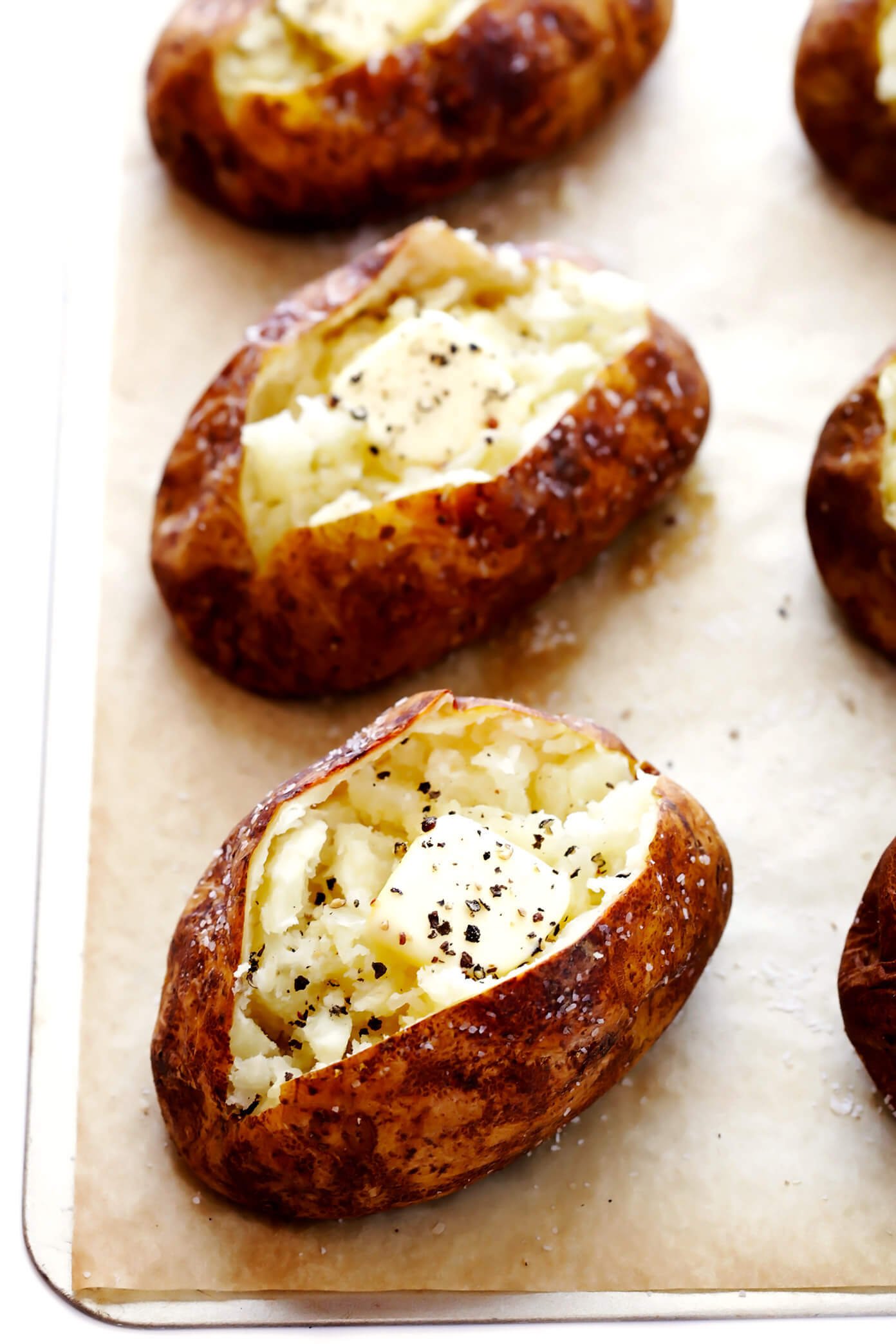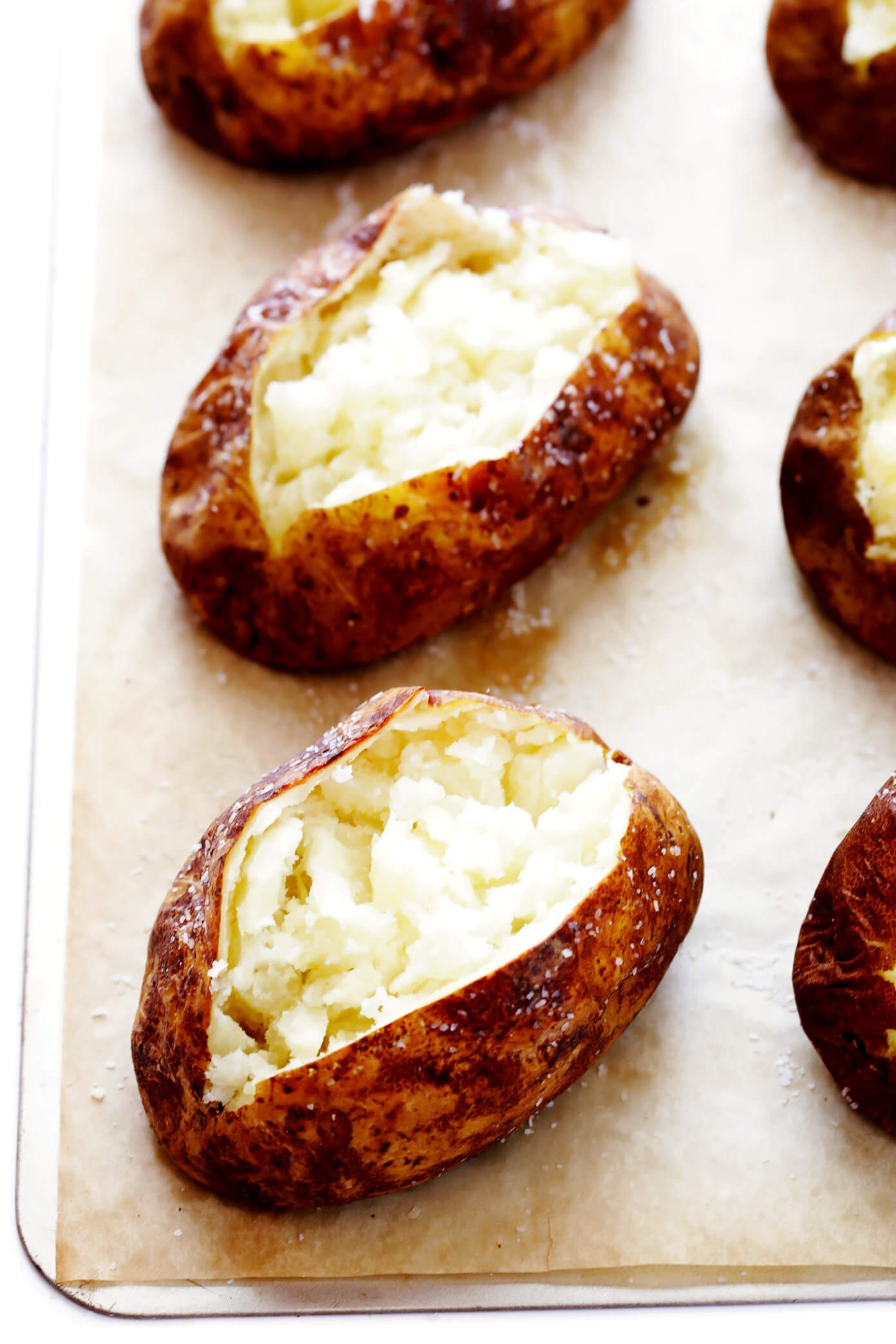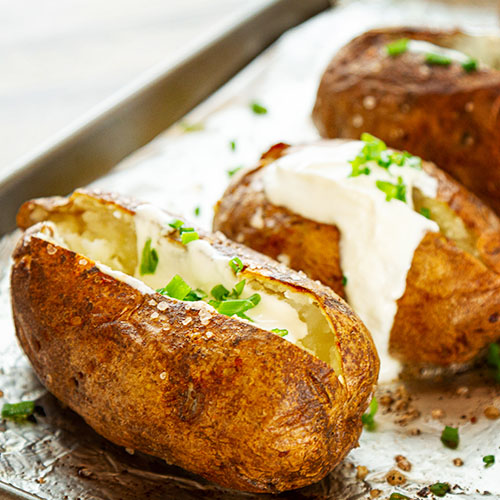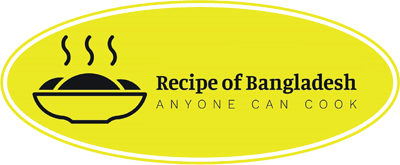Have you ever tried to bake a potato, only to find it undercooked or too mushy? You’re not alone.
Knowing the perfect temperature for a baked potato can mean the difference between a satisfying, fluffy interior and a disappointing, lackluster result. Imagine serving up a potato that’s perfectly cooked—crispy on the outside, tender and steamy on the inside. Sounds amazing, right?
We’ll uncover the ideal temperature for baking potatoes to perfection every single time. Stick around, because your quest for the perfect baked potato ends here, and you won’t want to miss these game-changing tips.

Credit: www.gimmesomeoven.com
Ideal Baking Temperature
Baking a potato to perfection requires knowing the ideal temperature. Many people love the crispy skin and fluffy inside of a well-baked potato. Achieving this texture often depends on the oven temperature. Understanding the right temperature can make a big difference in taste and texture.
What Is The Ideal Baking Temperature?
The ideal temperature for baking a potato is 400°F (204°C). This heat allows the potato to cook evenly. The skin turns golden and crispy. Inside, the flesh becomes soft and tender. A lower temperature might not give the desired crispiness. A higher temperature risks burning the skin before the inside is ready.
Why 400°f Is Perfect
At 400°F, the potato’s natural starches break down perfectly. This process gives the potato its creamy texture inside. The heat also helps in caramelizing the sugars in the skin. This caramelization adds a wonderful flavor. Cooking at this temperature ensures the potato is neither undercooked nor overcooked.
Checking Potato Doneness
Use a fork or skewer to check doneness. Insert it into the thickest part of the potato. It should slide in easily. Another sign is the potato’s skin will be golden brown. If it feels firm, let it bake a bit longer.
Adjusting For Potato Size
Larger potatoes need more time. Smaller potatoes may cook faster. Adjust the baking time, not the temperature. This ensures even cooking. It’s important to monitor smaller potatoes. They can overcook and become dry.
Why Temperature Matters
Understanding the right temperature for baked potatoes is crucial. It affects texture and taste. Too high or too low can ruin your dish. Knowing why temperature matters ensures perfect results.
Temperature impacts how evenly your potato cooks. If too low, it stays hard inside. Too high and the outside burns before inside cooks. Consistent heat is key for fluffy insides and crispy skins.
Balanced Heat For Texture
Balanced heat delivers the ideal texture. At 400°F, potatoes cook through evenly. The skin crisps while the inside softens. This balance creates the perfect bite.
Avoiding Undercooked Potatoes
Undercooked potatoes can be unpleasant. They are hard and lack flavor. Setting the oven to the right temperature prevents this. Ensure thorough cooking for enjoyable meals.
Achieving Crispy Skins
Temperature plays a role in skin crispiness. A high enough heat ensures the skin crisps. Cook potatoes at 400°F for desired crispiness. It’s a simple but effective method.
Correct temperature enhances flavor. Well-cooked potatoes have rich taste. Balanced cooking brings out natural sweetness. This makes each bite more delicious.
Preheating The Oven
Preheating the oven is a vital step in baking potatoes. It ensures even cooking and crispy skin. An oven at the right temperature prepares the potato to bake perfectly. This step is simple but crucial for the best results.
Baking requires precision. Preheating the oven is the first step. It sets the stage for a delicious baked potato. A consistent heat cooks the potato evenly, making it soft inside and crispy outside.
Setting The Oven Temperature
Set the oven to 425°F (220°C). This temperature is ideal for baking potatoes. It allows the potato to cook evenly and ensures a crispy skin. A lower temperature might not cook the potato well. Higher temperatures can burn the skin.
Why Preheating Matters
Preheating helps the potato cook evenly. Without it, the potato might be raw inside. It ensures the potato skin gets crispy. A cold oven affects the texture of the potato. Preheating creates consistent cooking conditions.
How Long To Preheat?
Preheat the oven for 15 minutes. This time is enough for the oven to reach the set temperature. It guarantees the potato starts cooking immediately once placed inside. Use this time to prepare the potatoes.
Using An Oven Thermometer
An oven thermometer checks the temperature accuracy. Ovens can vary in actual temperature. Use a thermometer to ensure the oven is at the correct setting. It helps in achieving the best baking results.
Choosing The Right Potato
Cooking a perfect baked potato involves setting the oven to 400°F. This temperature ensures crispy skin and a fluffy inside. Always use a fork to check tenderness before serving.
Choosing the right potato can make all the difference when baking the perfect baked potato. The type of potato you choose affects both the texture and flavor of your final dish. Imagine biting into a fluffy, perfectly cooked potato that melts in your mouth. That’s the goal! But how do you achieve it? Let’s find out.
Understanding Potato Varieties
Different potatoes offer varying levels of starch and moisture. Russet potatoes, for instance, are often considered the best choice for baking. They are high in starch and low in moisture, which results in a light, fluffy texture. Yukon Golds, on the other hand, have a creamier texture due to their medium starch content.
Why Russet Potatoes Shine
Russets have a thick skin that crisps up beautifully when baked. This crunchy exterior contrasts delightfully with the soft interior. If you’ve ever had a loaded baked potato at a steakhouse, chances are it was a Russet. Its ability to hold toppings without getting soggy makes it a favorite.
Size Matters
When choosing your potatoes, keep size in mind. Uniformly sized potatoes ensure even cooking. If they’re too large, the insides might be undercooked when the skin is done. Too small, and you could end up with a dry, overcooked potato. Aim for medium-sized potatoes for the best results.
Personal Experience With Potato Selection
I once tried baking with red potatoes, thinking they’d make for an interesting twist. They ended up too dense and didn’t have the fluffiness I was hoping for. This taught me the importance of sticking to what works best. Have you ever experimented with different potatoes? What were your results?
Local And Seasonal Choices
Consider the availability of potatoes in your region. Locally grown options often have better flavor and freshness. Visiting a local farmer’s market can be an excellent way to find high-quality potatoes. Plus, supporting local farmers is always a bonus. Choosing the right potato sets the foundation for a successful baked potato. Next time you’re at the store, consider which variety will give you that perfect balance of texture and taste. What will you choose for your next baking adventure?
Baking Time And Temperature
Preparing the perfect baked potato isn’t just about tossing it in the oven. It’s an art that involves knowing the right baking time and temperature to achieve that crispy skin and fluffy interior. Have you ever wondered if the oven setting makes a difference? Let’s dive into the specifics of standard and convection oven settings for baking potatoes.
Standard Oven Settings
Using a conventional oven is the classic method for baking potatoes. Set your oven to 425°F (220°C). This temperature allows the potato to cook thoroughly without drying out.
Baking time typically ranges from 45 minutes to an hour. The size of your potato is crucial. Larger ones will need more time to achieve that perfect texture. A helpful tip is to pierce the potatoes with a fork before baking. This allows steam to escape, ensuring the inside cooks evenly.
Have you ever impatiently opened the oven too early? It’s tempting, but wait until the skin is crisp and gives slightly when you press it. This is your indication of doneness. The anticipation will be worth it!
Convection Oven Settings
If you’re using a convection oven, you’re in for a treat. The circulated hot air cooks food faster and more evenly. Set the temperature to 375°F (190°C). The lower temperature compensates for the fan’s efficiency.
Baking time here is shorter, usually between 35 to 45 minutes. This method can be a time-saver if you’re in a rush or have multiple dishes cooking simultaneously.
Remember, the convection setting can dry out the potato if you’re not careful. Keeping a close eye will help avoid this. Have you tried this setting before? It’s a game-changer for many.
So, which setting do you prefer? Whether you opt for the traditional oven or the convection method, understanding the nuances can elevate your cooking game. Next time you bake a potato, experiment with these settings and see which one delights your taste buds the most!
Checking Doneness
Checking doneness is crucial for perfect baked potatoes. The potato’s texture and taste depend on it. Properly cooked, it offers a fluffy interior. Undercooked, it feels hard and unappetizing. Overcooked, it turns mushy. Let’s explore ways to check doneness.
Using A Thermometer
A thermometer provides precision. Insert it into the thickest part of the potato. The ideal temperature is 210°F (99°C). At this point, the potato is cooked perfectly. The flesh will be tender and flavorful. Digital thermometers are easy to use. They give quick, accurate readings.
Visual And Tactile Cues
Visual cues help in checking doneness. The skin should be crisp. A golden-brown color indicates readiness. Tactile cues are equally important. Gently squeeze the potato. It should yield slightly under pressure. A fork should easily pierce the skin. These cues suggest the potato is ready.
Common Mistakes
Cooking baked potatoes at the wrong temperature can lead to undercooked or mushy results. Aim for a consistent temperature around 400°F for crispy skins and fluffy insides. A thermometer ensures perfection by measuring the internal temperature, which should reach 210°F for ideal texture.
Achieving the perfect baked potato is an art, but even seasoned cooks can make mistakes that lead to disappointing results. Whether you’re aiming for a fluffy interior or a crispy skin, the cooking temperature plays a crucial role. Missteps can easily occur if you’re not paying attention to details like oven settings or potato size. Let’s delve into some common mistakes and how you can avoid them for potato perfection.
1. Setting The Oven Temperature Too Low
If your oven is set too low, your potato might never reach that fluffy interior you’re hoping for. A common mistake is thinking a lower temperature will make the potato cook more evenly. Instead, it can lead to a prolonged cooking time, resulting in a less-than-perfect texture. Aim for a temperature of 400°F (204°C) for the best results.
2. Not Preheating The Oven
Skipping the preheating step is another frequent error. It’s tempting to pop the potato in as soon as you turn on the oven, but this can lead to uneven cooking. Always wait until your oven is fully preheated before placing your potato inside. It ensures a consistent cooking environment from the start.
3. Using Potatoes Of Different Sizes
Using potatoes of varying sizes can lead to inconsistent cooking. Smaller potatoes will cook faster, leaving larger ones underdone. Choose potatoes that are roughly the same size to ensure even cooking. If you have a mix, consider cutting the larger ones in half to balance the cooking time.
4. Skipping The Fork Prick
Forgetting to prick your potatoes with a fork can lead to unwanted surprises. Pricking allows steam to escape during baking. Without it, your potato might burst in the oven. A few pokes with a fork are all it takes to prevent this mishap.
5. Not Considering Altitude
Altitude can affect cooking times and temperatures. If you live at a high altitude, your potatoes may take longer to cook. You might need to adjust the temperature slightly or extend the baking time. Check your potatoes regularly to avoid over or undercooking.
6. Ignoring The Resting Time
After removing the potato from the oven, it’s tempting to dive right in. However, allowing it to rest for a few minutes can enhance the texture. This brief pause lets the steam inside redistribute, making the interior even fluffier. Patience is a small price to pay for a perfect potato. Baking the perfect potato is all about attention to detail. By avoiding these common mistakes, you’ll elevate your cooking skills and delight your taste buds. What’s your favorite baked potato topping? Share your thoughts below!

Credit: www.gimmesomeoven.com
Adjustments For Altitude
Baking potatoes at high altitudes can be tricky. The atmospheric pressure decreases as altitude increases. This affects cooking temperatures and times. Potatoes take longer to cook at high altitudes. You need to adjust your baking strategy. Let’s explore how to do that effectively.
Understanding The Impact Of Altitude
At higher altitudes, water boils at lower temperatures. This slows down the cooking process. Potatoes may take up to 25% longer to bake. This can be frustrating if you’re not prepared. Knowing this helps you adjust your cooking time.
Recommended Temperature Adjustments
Increase the oven temperature by 15-25 degrees Fahrenheit. This compensates for the lower boiling point. It helps the potato cook more evenly. A baked potato should reach an internal temperature of 210 degrees Fahrenheit. Use a food thermometer to check.
Monitoring Cooking Time
Start checking your potatoes after the usual cooking time. Insert a fork to test for tenderness. If the fork slides easily, your potato is ready. If not, keep baking in 5-minute increments. Check often to avoid overcooking.
Additional Tips For High Altitude Baking
Wrap your potatoes in foil. This traps moisture and speeds up cooking. Poke a few holes in the foil. This allows steam to escape and prevents sogginess. Consider using a convection oven if available. It circulates air and can reduce baking time.
Enhancing Flavor
Baking potatoes to perfection requires a precise temperature. Aim for 210°F (99°C) for a fluffy interior. This ideal heat enhances the potato’s natural flavor, ensuring a delightful taste experience.
Enhancing the flavor of a baked potato can elevate your dish from simple to sensational. A perfectly cooked baked potato should have a crispy skin and a fluffy interior, creating a blank canvas for a burst of flavors. But how can you truly enhance that flavor to make every bite memorable?
Seasoning Tips
A good seasoning can transform a baked potato from bland to brilliant. Before baking, rub the potato with olive oil and sprinkle with sea salt. This not only adds taste but also helps achieve that desirable crispy skin. Consider adding a pinch of garlic powder or rosemary to the mix.
These herbs can infuse the potato with an aromatic touch that delights the senses. You can even experiment with spicy paprika or tangy lemon zest for a unique twist. What seasoning will you try next?
Toppings And Fillings
Toppings can be the star of your baked potato. Classic choices like butter and sour cream never disappoint, but why not try something different? Add some shredded cheese and bacon bits for a savory delight. Or, opt for a healthier version with Greek yogurt and chives. If you’re feeling adventurous, consider stuffing the potato with chili or broccoli and cheese.
The possibilities are endless, so get creative with your toppings. What combination will surprise your taste buds? Taking these steps not only boosts the flavor but also turns a simple baked potato into a meal with personality. What will you do to enhance your next baked potato experience?
Storing Leftovers
After enjoying a perfectly baked potato, storing leftovers correctly ensures freshness. Proper storage maintains the potato’s flavor and texture. It prevents spoilage and waste. Follow these simple steps to keep your baked potatoes delicious.
How To Store Baked Potatoes
Cool baked potatoes before storing. Use a clean container or wrap them in foil. Refrigerate within two hours to avoid bacteria growth.
Ideal Storage Temperature
Store baked potatoes at 40°F or below. This temperature keeps them safe to eat. It also preserves their quality.
Reheating Leftover Potatoes
Reheat leftovers to 165°F. This ensures they are hot enough to eat safely. Use an oven or microwave for best results.
How Long Can You Store Leftovers?
Eat refrigerated baked potatoes within three to four days. Beyond this, they may spoil. Freezing extends their life to about a month.

Credit: www.howtocook.recipes
Frequently Asked Questions
How Long Does It Take To Bake A Potato At 400 Degrees?
Bake a potato at 400 degrees for about 45 to 60 minutes. Check with a fork for softness. Wrapping in foil speeds up cooking, but results in softer skins. For crispier skins, bake directly on the rack. Always preheat the oven for best results.
How Long Does It Take To Bake A Potato At 350 Degrees?
Baking a potato at 350 degrees Fahrenheit takes about 60 to 75 minutes. Ensure the potato is tender by inserting a fork. For best results, turn the potato halfway through cooking. This will ensure even baking and a fluffy inside.
How Long Do You Cook A Baked Potato In The Oven?
Bake a potato in the oven at 400°F for 45-60 minutes. Pierce with a fork to check doneness. Ensure the potato is tender and the skin is crispy. Adjust time based on size. Small potatoes may take 45 minutes, while larger ones might need up to 60 minutes.
What Is The Ideal Temperature For Baking A Potato?
The best temperature is 400°F (200°C). This ensures a crispy skin and fluffy inside.
Final Words
Cooking a baked potato to the right temperature ensures perfect results. Aim for an internal temperature of 210°F. This gives you a fluffy and soft inside. Check with a food thermometer for accuracy. Consistent heat is key for even cooking.
Preheat your oven to 400°F for best results. Poke holes in the potato to let steam escape. This helps avoid soggy spots. Enjoy your tasty, well-cooked baked potato every time. Happy cooking!

Leave a Reply